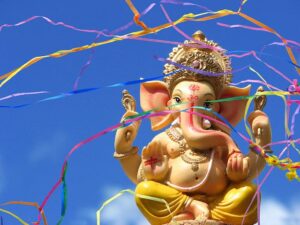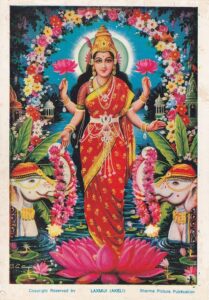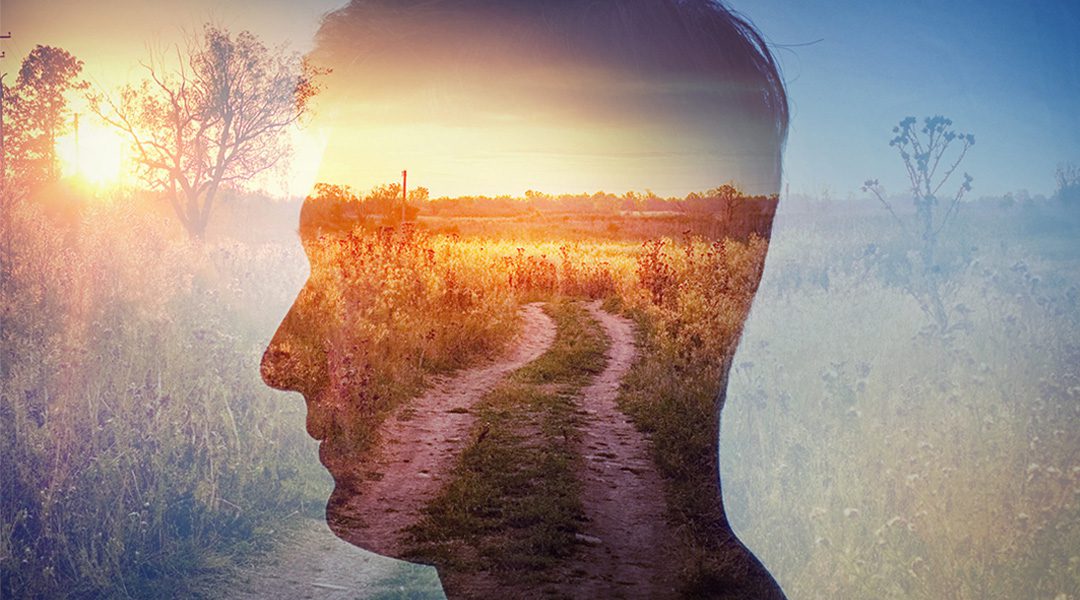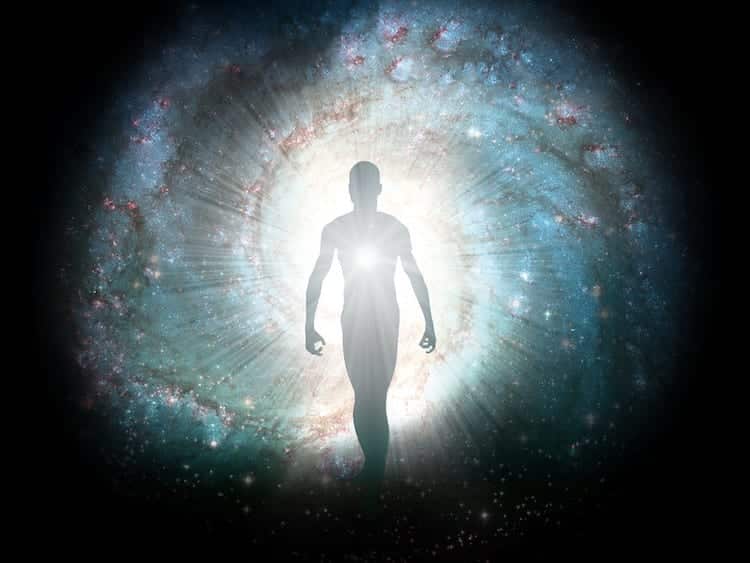Marni Sclaroff is a Yoga teacher and mentor who enjoys weaving the threads of mythology into all of her offerings. In the following interview, Marni shares her understanding of story and symbolism, her personal journey on the path, and her hopes for all students of Yoga.
What is the power of story and symbolism in the Yogic tradition? How can we access the deeper meaning of these stories to uncover truth, and how can that truth positively impact our lives?
“You could say that myths are lies that we tell ourselves to realize deeper truths. The universal truths are always hiding in plain sight, and the stories of Yoga help us to see our lives from a symbolic perspective. This always brings us to wider perspective, which always helps us to see things that we might have missed before.
The stories of Yoga are magnificent and dramatic. They mirror our own lives in many ways, and yet they are different; they are not our own stories. Because of this, when we listen to these wonderful tales, we hear them with a sort of detachment. That is useful because the ego can get of of the way, and we can listen from a much deeper place.
When I listen to a story, I look for metaphor. I think, ‘This is how they are meant to be understood.’ We want to listen for the symbolic messages, and not take things literally.

One of my favorite stories is of Ganesha. He is the elephant headed deity who had his head cut off by his own father, Shiva. Then, realizing his mistake, Shiva replaced his son’s head with the head of an elephant. So, obviously, we don’t want to think of this story as just a poor boy who was decapitated, and that is the end. If we step back with a wider, more symbolic view of the story, we can see it as a kind of initiation.
Ganesha crosses a threshold when his head gets cut off, and then he steps into his new life with his new head. His body is the same, but now he sees and experiences life with the head of an elephant. He got his head cut off, but then, he received an even better head that has all kinds of new magic and wisdom. Haven’t we all had an experience at one time or another, where we feel like we’ve stepped into a new life? Maybe you go through a divorce, you get sick or injured, you lose a job, or you move away from your family. While it’s happening it might seem like your world is ending, or like your head has been cut off. In the midst of those experiences it’s hard to see the other side. Ganesha’s story reminds us that there is always a rebirth after every death. It’s like a kind of affirmation that helps us to navigate those more difficult times with some presence, grace, and perspective. The story just reminds us that the divine is living and breathing inside of every single human experience, even the really difficult ones.”
What kind of role does mythology and symbolism have in your own Yoga practice? How do you share that with others? Is story-telling an important part of this as well?
“I have always loved stories. Stories help me see myself as part of something bigger. They help me connect to parts of myself that I wouldn’t otherwise be able to know or see. Each story holds archetypal energies that are like keys to the doorway of the soul. I think of Yoga as a process of being and becoming. We are always whole and perfect and complete. This is just the truth. At the same time, we are evolutionary beings. We are expanding and growing and becoming. The myths, symbols, and archetypes of Yoga, help us to settle more into the being, and continue to expand into our potential.
For example, the Goddess Lakshmi holds the archetypal energy of beauty, goodness, and abundance. I teach people how to recognize that the beauty and abundance is who they are. Lakshmi reminds us of that. She holds the mirror of beauty so that we can realize that it’s who we are. So many of us struggle with that. We look for abundance elsewhere, we seek beauty on the outside. We think beauty is something on the surface, and we miss all of the gifts that are right there in front of our noses.

Lakshmi
Lakshmi teaches us about the deeper experience of beauty. She teaches us about Essential Beauty. This is the beauty that emanates from the inside of a thing. In my practices with her, I’ve learned how to see that kind of beauty. When I learned this, I realized that I could stop trying fix myself, because I wasn’t broken. I was able to relax into myself because I wasn’t fighting for something outside anymore. Lakshmi taught me that I am essentially generous and beautiful—we all are. When you really practice that, live that, and fully embody it, the Yoga happens. You become more of yourself. You become a more fully realized version of your own being-ness, and that is exactly what we are here to do. And then, you can truly serve something good. You have everything to offer, because you know that you are much more than just you. The stories give us these kinds of gifts. They make us bigger; they expand our listening, our vision, and our understanding of truth. They give us something to step up to and into, and that becomes our living Yoga.”
Through the practice of Yoga, you were able to heal yourself after suffering from depression and disordered eating. Would you be willing to share some of your personal journey and how Yoga changed your life?
“When I started Yoga 20 years ago, I was suffering from low self-esteem, deep depression, and eating disorders. I was miserable, and I hated myself and my life. But, there was something in my heart that longed to be out of the suffering. I think all spiritual journeys begin with that. It was that longing that brought me to that first Yoga class. In that first class, I knew that Yoga would give me the tools I needed for healing and transformation. It was the first time in my life where I felt like my body could become a place where I felt like I belonged. That sense of belonging was the beginning of the healing for me. I had always felt like there wasn’t a place for me, like I didn’t fit in anywhere. As I began to feel more comfortable in my body, I was able to feel more comfortable around others. The Yoga community was such a safe space for me to learn how to be myself. When I found Yoga, I found my home. A huge part of how Yoga heals us is through the sangha (community). There is great power in being around other people who are doing this work. As each one of us evolves, we hold bigger spaces for more evolution. We inspire each other, reflect each other’s light, and share our challenges in ways that help us to know that we’re not alone.
There is something really magnificent about a shared intention. In the Yoga community, we all know that we are here to grow. We all share the vision for more connection, more love, more harmony, etc. Just to be held in that kind of space for all of these years has truly been the greatest gift. I think that Yoga heals us in community. We all need to do our own deep work, and we need to share it with each other. That is what keeps me going, and what allowed me to be who I am today. I know that I have something important to share with the world, and I wake up everyday for that.”
On your website, you have written “A Love Letter to All Yoga Students.” It’s a powerful, poetic exploration of the meaning Yoga practice can have for students. What inspired this love letter?
“I wrote that letter because I saw so many students coming to class once or twice a week, and loving it. But, then they would go home, and live their “other” lives, and nothing was really changing. I saw that there was a disconnect between what Yoga really is and what they were experiencing. Yoga is a practice of integration. transformation, and living. It is not something you do once in awhile. It is who you ARE. In order for students to realize that, they have to take it home with them. They have to savor it, practice it, and live it. They have to realize that the practice they are doing belongs to them. I don’t want people to think that their Yoga should look like my Yoga. Yoga always meets us exactly where we are. I see how people have this sense of waiting to get “better” at the practice before they really let themselves dive in. They see the teachers with all of this information and understanding, and they think that Yoga should look like that. Then, they miss so many opportunities to really be present with how their Yoga is living them.
I want people to live Yoga. I want them to know that it belongs to them. I want them to practice whatever they learn, and enjoy it. Lots of students think that they don’t know enough to practice at home. I tell them to just get on your mat and move and breathe. Pay attention; that’s good Yoga. Wash your dishes and really be there; that’s good Yoga. The next time you get angry, stop and breathe and choose consciously what you will do with that; that’s good Yoga. You don’t need to learn Sanskrit or memorize the Yoga Sutras, unless you want to. All of the tools of Yoga are really useful in helping us to refine our awareness and awaken to Universal truths, but they are not necessary for Yoga to happen. Yoga is universal. It belongs to everyone. I want you to know that you are it. Because then, you can do something good with it. More people doing good things in the world is the revolution that I want to be a part of.”



